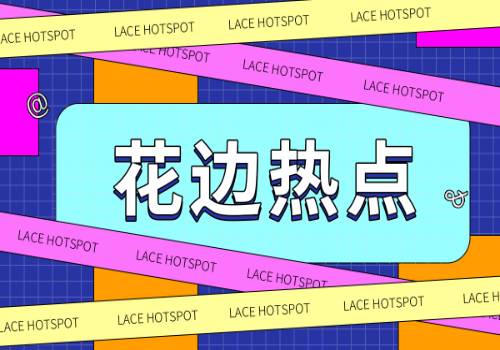Make That Wine!
Australia is a nation of beer drinkers. Actually, make that wine. Yes, wine has now just about supplanted beer as the alcoholic drink of choice, probably because of the extensive range of choices available and the rich culture behind them. This all adds a certain depth and intimacy to the drinking process which beer just cannot match. In addition, although wine drinkers seldom think about it, moderate consumption seems to be beneficial for the health, lowering the incidence of heart disease and various other ailments.
 (资料图)
(资料图)
Wine is the product of the fermentation of grape juice, in which yeast (a fungus) consumes the natural sugars within, producing alcohol and carbon dioxide as waste. Yeast grows naturally on many varieties of grapes, often visible as a white powder, and causing fermentation directly on the plant. Thus, the discovery of wine-making was inevitable at some stage in human history. The evidence shows that this was at least 8,000 years ago in the Near East. From there, wine-making spread around the ancient Mediterranean civilisations, where the liquid was extensively produced, drunk, and traded. To this day, the biggest drinkers of wine remain the Mediterranean countries, with France leading the way.
This leads to the classification of wines, which is quite complex. It often begins with the colour: red or white. Most people do not know that the colour of wine is not due to the grapes used (whose skins are either green or purple), but to the wine-making process itself. All grape juice is clear. Red wines are produced by leaving the grape skin in contact with the juice during fermentation; white wines by not doing so. Thus, white wine can be made from dark-coloured grapes, provided that the skin is separated early, although the resultant wine may have a pinkish tinge.
A similar wine classification is based more specifically on the grape species used, giving such well-known names as Pinot Noir and Merlot. Chardonnay grapes remain one of the most widely planted, producing an array of white wines, rivaling the cabernet sauvignon grape, a key ingredient in the world’s most widely recognised, and similarly named, red wines. When one grape species is used, or is predominant, the wine produced is called varietal, as opposed to mixing the juices of various identified grapes, which results in blended wines. The latter process is often done when wine-makers, and the people who drink their product, want a consistent taste, year after year. Far from being looked down upon, it often results in some of the world’s most expensive bottles, such as the Cote Rotie wines in France.
Increasingly, however, market recognition is based on the location of the wine production, resulting in labels such as Bordeaux in France, Napa Valley in California, and the Barossa Valley in Australia. Traditional wines made in these places carry trademarks, respected by serious wine drinkers. However, an example of the blurred lines is the term ‘champagne’. This was once expected to be made from grapes grown in the Champagne region of France, with all the expertise and traditions of that area, but, despite legal attempts to trademark the term, it has become ‘semi-generic’, allowing it to be used for any wine of this type made anywhere in the world.
Finally, we come to the vinification method as a means of classification. One example is, in fact, champagne, known as a ‘sparkling’ wine. By allowing a secondary fermentation in a sealed container, it retains some of the waste carbon dioxide. Another variation is to stop the fermentation before all the natural sugars are consumed, creating dessert wines, ranging from slight to extreme sweetness. Yet again, grapes can be harvested well beyond their maximum ripeness, creating ‘late harvest wines’, or allowed to become partially dried (or ‘raisoned’), creating ‘dried grape wines’. Clearly, there are many possibilities, all producing uniquely flavoured products.
One of the best-known terms relating to wine is ‘vintage’. This signifies that the product was made from grapes that were grown in a single labeled year. If that year is eventually acknowledged to have produced exceptionally fine grapes and resultant wines (‘a good vintage’), bottles from that period are often saved for future consumption. Of course, the appreciation and assessment of wine is an inexact science, meaning that the significance of a particular vintage often promotes much speculation and disagreement. A non-vintage wine is usually a blend from the produce of two or more years, which is done, as mentioned before, for consistency and quality control.
This leads to the rich and varied world of wine assessment, and its descriptive terminology. Wine has such a variety of aromas, flavours, textures, and aftertastes that serious wine drinkers demand an agreed vocabulary so that the drinking sensations can be reliably described in writing. From bouquet to biscuity, mellow to musky, vivid to vegetal, the conceited connoisseur can perplex the listener with some really purple prose. Perhaps the opportunity to posture pretentiously with all this jargon is the main reason why wine enthusiasts are so taken with this product. Cheers!
SECTION 1: QUESTIONS 1-13
Questions 1-4
Do the following statements agree with the information given in Reading Passage One?
Write
TRUEif the statement agrees with the informationFALSEif the statement contradicts the informationNOT GIVENIf there is no information on this
1________________ Wine is popular in Australia because it is healthy.
2________________ Yeast is white-coloured.
3________________ Wine is popular in the Near East.
4________________ Blended wines are usually cheaper.
Questions 5-10
Complete the table.
Choose NO MORE THAN TWO WORDSfrom the passage for each answer.
Classification based onAssociated FactRelated ExamplecolourRed wines use 5______ in fermentation.6______grape speciescan be 7______ or blendedCote Rotie wineslocationDrinkers of wine 8______ this.Barossa Valley9______can allow 10______ to remaindessert wine
Questions 11-13
Choose the correct letter, A, B, C, or D.
11Vintage wines are
Amostly better.
Boften preferred.
Coften discussed.
Dmore costly.
12The author thinks that wine terminology is
Aunnecessary.
Bserious.
Cgood.
Dbad.
13Wine
Ais more popular than beer, in Australia.
Bis most popular in France.
Ccan be simply classified.
Dis often ‘raisoned’.
下一篇:最后一页
-

九州游戏真传奇单职业_九州游戏真传奇-天天视讯
1、应该是坏掉了啊这个真不知道网游用不了的这个有作弊的因素在里面有的游戏不给用该是坏掉了啊估计是游戏
-

沙特外交部:苏丹冲突双方代表已抵达吉达_看点
沙特阿拉比亚电视台当地时间6日下午援引沙特外交部的消息报道称,苏丹冲突双方即苏丹武装部队和快速支援部
-

环球看热讯:强大且可靠,使用 Linux cron 命令安排任务
cron作业的命令存储在Linux系统上的crontab文件中,该文件通常位于 etc crontab中。使用$crontab-l显示crontab文件的内容。
-

当前热门:iphone14手机如何使用截图功能
手机截屏,是现在智能手机上重要的基础功能之一,平时看到个有意思的内容,很多人都喜欢直接截屏保存下来。
-

福建省福州市2023-05-06 17:42发布暴雨橙色预警
一、福建省福州市天气预报1、闽侯县气象台2023年05月06日17时42分升级暴雨黄色预警信号为暴雨橙色预警信号
-

辽萧太后怎么称呼萧银宗_辽萧太后_环球资讯
1、萧太后,名萧绰,原姓拔里氏,拔里氏被耶律阿保机赐姓萧氏,契丹族人。2、萧何,乃汉族人。3、本是不同
-

世界即时看!中颖电子:目标自下半年起缓步降低存货水位
36氪获悉,中颖电子在互动平台表示,公司将积极管理存货,目标自下半年起缓步降低存货水位。关于未来存货水
-

印度从中国抢走了苹果,越南出口超越深圳,中国制造危险了?|环球视点
2023年3月越南货物进出口总额约为584 9亿美元!一个月,这仅仅是一个月创造的进出口总额!而去年越南的同月
-

凭什么说女人生孩子天经地义_凭什么说 环球快资讯
1、歌名:凭什么说作词:刘心作曲:刘心歌手:刘心所属专辑:隔壁家的孩子歌词:你说你爱我爱我爱我爱我凭
-

威海高区消防:联合志愿者“进小区”为老人“送平安”-天天快看点
齐鲁网·闪电新闻5月6日讯 5月6日,威海火炬高技术产业开发区消防救援大队联合消防志愿者“进小区”为老、
X 关闭
雅思阅读第004套P1-Make That Wine!_环球实时
天龙八部大神消费排行榜 天龙八部大神-全球快讯
观察:车市“价格战”引发连锁反应:二手车保值率持续性下降
车臣领导人:愿率兵赴巴赫穆特作战
杜蕾斯避孕效果_杜蕾斯 英国避孕用品品牌 环球要闻
全球即时:对待工作的态度怎么描述
X 关闭






